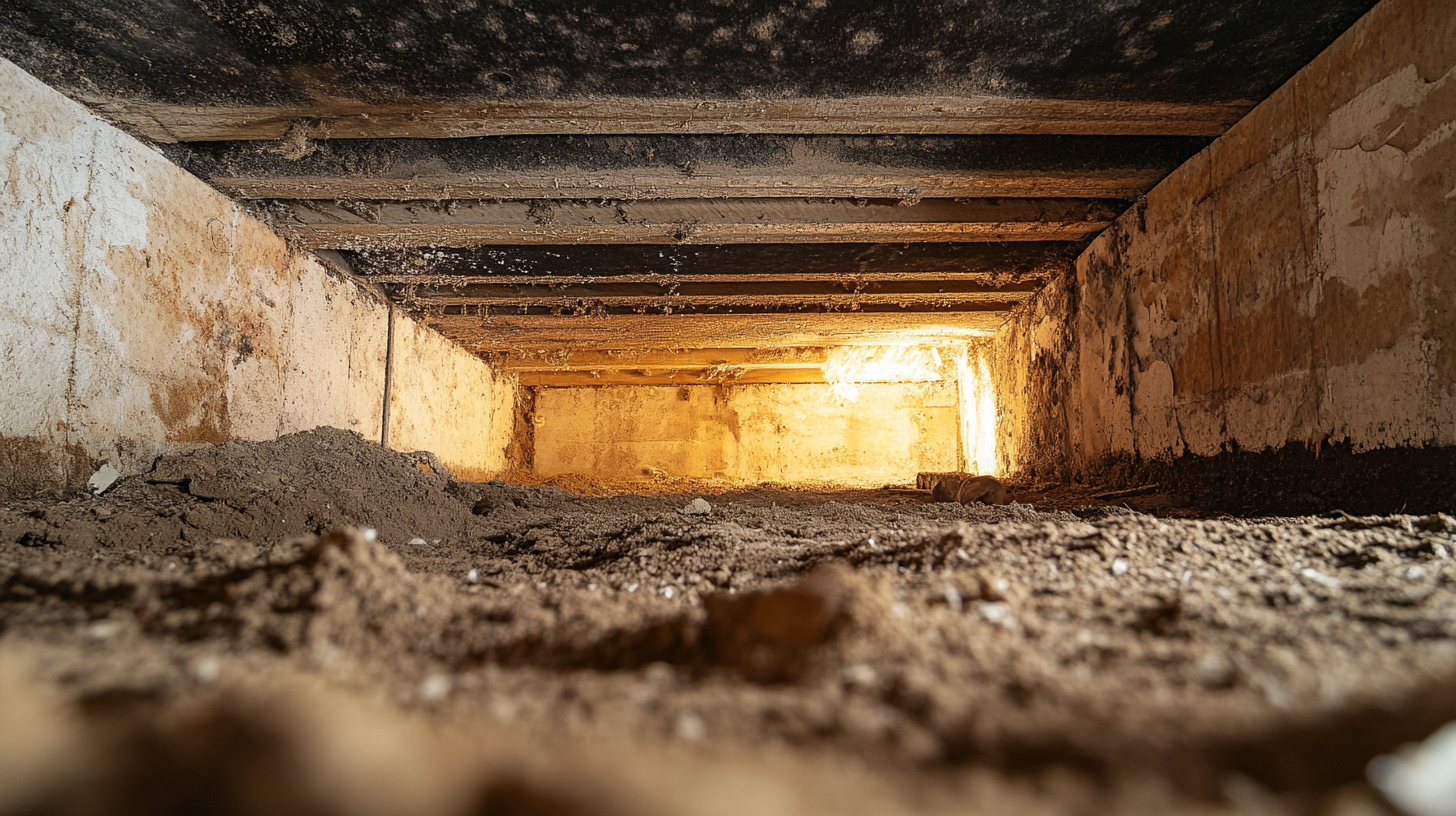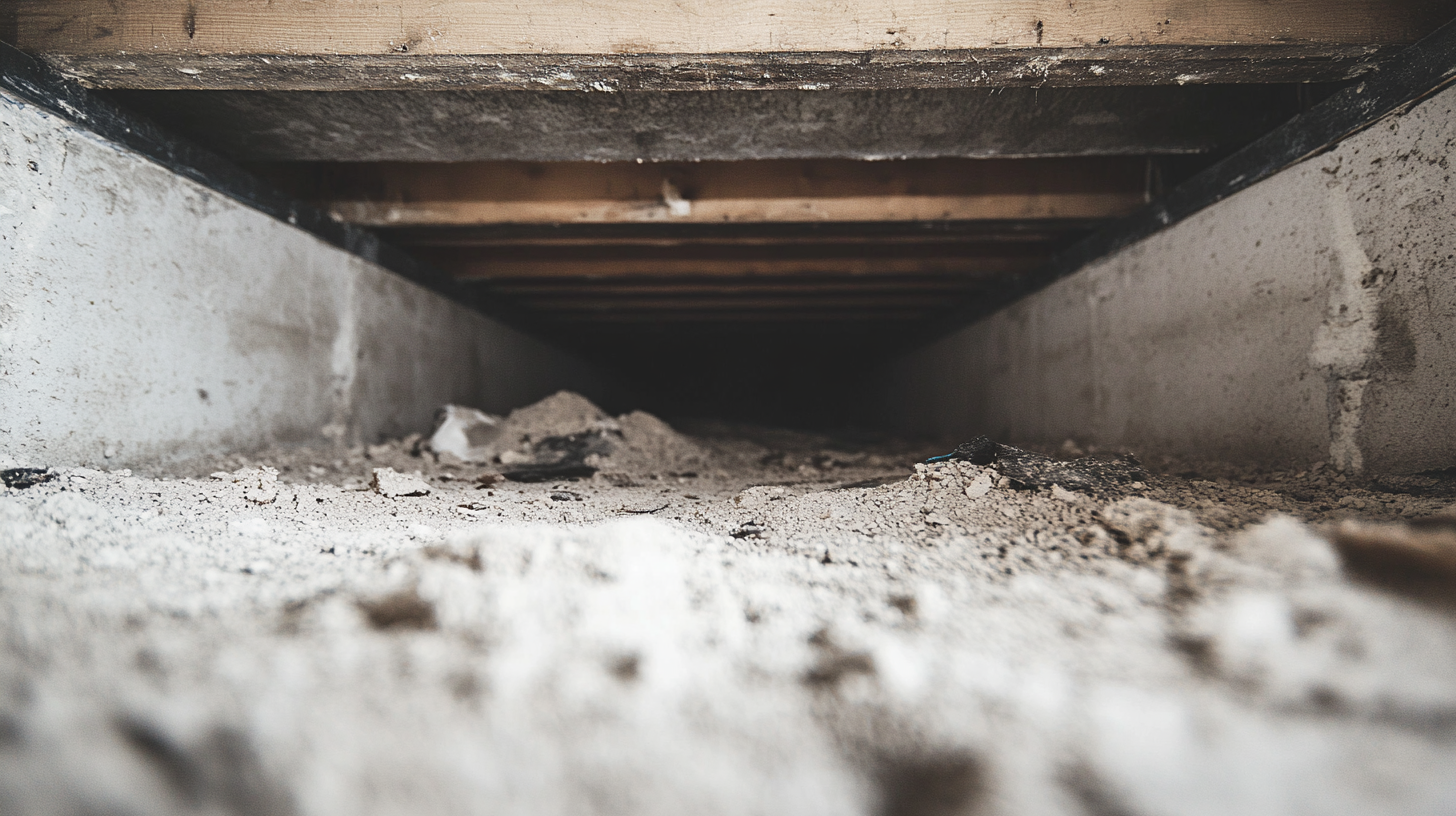Comparing Activated Charcoal and Baking Soda for Odor Neutralization

Odor neutralization is essential for maintaining a clean, comfortable, and healthy environment in homes, offices, and public spaces. Unpleasant odors not only affect the air quality but can also disrupt daily activities, create discomfort, and even pose health risks. Whether dealing with persistent pet odors, cooking smells, or musty air from mold, effectively neutralizing odors enhances the overall atmosphere and promotes well-being. By addressing odor issues at the source and implementing proper odor control strategies, you can create a more pleasant and inviting environment for everyone.
Understanding the Science Behind Odor Neutralization
To effectively neutralize odors in your home or environment, it's important to understand the science behind what causes them and how neutralization works. By focusing on the underlying mechanisms, we can better address odors at their source rather than simply masking them.
What Causes Odors?
Odors are caused by volatile organic compounds (VOCs), which are small molecules that easily evaporate into the air. These VOCs are released from various sources, such as food, pets, chemicals, and waste, and they interact with the olfactory system, triggering the sensation of smell. The nature of these compounds allows them to spread quickly and linger in the air, making it difficult to eliminate unpleasant odors without proper neutralization.
Odors can become persistent if not properly addressed because many VOCs tend to cling to surfaces, fabrics, and other materials. Simply masking these smells with fragrances may temporarily hide the odor but does nothing to remove the VOCs from the environment. Neutralizing odors, on the other hand, targets the source, breaking down or trapping the VOCs, ensuring that the smell is permanently eliminated.
How Odor Neutralizers Work
Odor neutralizers work through two primary processes: absorption and adsorption. Both are essential for effectively removing odor-causing VOCs from the air and surrounding surfaces.
Absorption
Absorption occurs when a material takes in odor molecules and holds them inside its structure. A common example of this is baking soda, which absorbs odor molecules by pulling them into its porous structure. Once inside, the odor-causing molecules are neutralized, making absorption an effective method for odor control in small, enclosed areas like refrigerators or closets.
Adsorption
Adsorption, in contrast, is the process by which odor molecules adhere to the surface of a material without being fully absorbed. Activated charcoal is an excellent example of an adsorbent. It works by attracting and trapping VOCs on its surface, thanks to its highly porous nature. As the odor molecules stick to the surface of the charcoal, they are effectively removed from the air, making adsorption a powerful method for neutralizing odors in larger spaces like living rooms or basements.
While both absorption and adsorption play crucial roles in odor neutralization, choosing the right method depends on the type of odor and the environment in which it needs to be controlled. Combining both methods can often lead to more comprehensive odor control, ensuring that your home stays fresh and free from unpleasant smells.
What is Activated Charcoal?
Activated charcoal is a powerful odor-neutralizing agent that is widely used in various environments to control and eliminate strong, persistent odors. Its unique properties make it highly effective in trapping odor-causing molecules, offering a natural and non-toxic solution for odor control.
How Activated Charcoal Works for Odor Neutralization
The effectiveness of activated charcoal lies in its highly porous structure. Activated charcoal is created by treating charcoal at very high temperatures, which increases its surface area and makes it exceptionally porous. These tiny pores act like sponges, allowing the charcoal to trap volatile organic compounds (VOCs) that cause unpleasant odors.
Activated charcoal works through a process called adsorption, where odor molecules adhere to the surface of the charcoal rather than being absorbed into it. The millions of tiny pores in activated charcoal attract and hold VOCs, preventing them from lingering in the air. This makes it particularly useful for eliminating strong odors, as the charcoal effectively captures and neutralizes the molecules responsible for the smell.
Common Uses of Activated Charcoal for Odor Neutralization
Activated charcoal is a versatile tool for odor control and is used in various settings where strong or persistent odors need to be addressed:
- Air Purifiers: Many air purifiers incorporate activated charcoal filters to trap VOCs and neutralize strong odors such as smoke, cooking smells, or chemical fumes. These filters are especially effective in improving indoor air quality by removing both odors and harmful gases.
- Refrigerators and Freezers: Activated charcoal is commonly placed in refrigerators and freezers to absorb food odors and prevent them from spreading. This keeps the fridge smelling fresh and prevents cross-contamination of smells between different foods.
- Pet Areas: One of the most popular uses of activated charcoal is in pet litter boxes and areas where pets spend time. By placing activated charcoal near litter boxes, it helps neutralize unpleasant smells, creating a fresher environment for both pets and humans.
Pros and Cons of Activated Charcoal
Like any odor-neutralizing method, activated charcoal comes with its own set of advantages and disadvantages:
Pros:
- Highly effective at neutralizing strong and persistent odors: Activated charcoal’s ability to trap VOCs makes it a top choice for eliminating tough odors such as smoke, pet odors, and food smells.
- Long-lasting compared to other methods: Activated charcoal filters and sachets can last for months before needing replacement, offering a more sustainable solution for ongoing odor control.
- Non-toxic and natural: Activated charcoal is a natural substance that does not contain harmful chemicals, making it safe to use around pets, children, and in food storage areas.
Cons:
- More expensive than alternatives like baking soda: Although highly effective, activated charcoal is often more expensive than simple odor absorbers like baking soda, which may be a consideration for some users.
- May require reactivation or replacement over time: To maintain effectiveness, activated charcoal needs to be replaced or reactivated by heating it to release the trapped VOCs. Without maintenance, the charcoal can become saturated and lose its odor-neutralizing properties.
- Not as effective for mild odors in large spaces without specialized equipment: In large open areas, activated charcoal on its own may not be enough to neutralize mild odors unless used in conjunction with air purifiers or other odor-control devices.
What is Baking Soda?
Baking soda, also known as sodium bicarbonate, is a widely used household product that offers a simple, natural, and affordable solution for odor neutralization. Its ability to absorb and neutralize odors makes it a go-to option for maintaining fresh and clean spaces in the home.
How Baking Soda Works for Odor Neutralization
Baking soda’s effectiveness in odor neutralization is rooted in its chemical composition. Sodium bicarbonate (NaHCO₃) works by absorbing moisture and volatile organic compounds (VOCs), which are responsible for many household odors. As a mild alkaline compound, baking soda can neutralize both acidic and basic odor-causing molecules, neutralizing odors at their source rather than just masking them.
When baking soda comes into contact with acidic or basic odors, such as those from food or waste, a chemical reaction occurs. This reaction alters the molecular structure of the odor-causing compounds, rendering them less volatile and less odorous. In essence, baking soda breaks down the molecules that create unpleasant smells, effectively neutralizing them and improving air quality.
Common Uses of Baking Soda for Odor Neutralization
Baking soda is a versatile tool for odor control and can be used in many different areas of the home:
- Refrigerators: One of the most common uses of baking soda is placing an open container in the refrigerator to absorb food odors. It works by capturing the volatile molecules released by stored food, preventing them from lingering or mixing with other items in the fridge.
- Carpets and Upholstery: Baking soda is often sprinkled onto carpets and furniture to absorb lingering smells, such as pet odors or smoke. After letting it sit for a while, you can vacuum it up, leaving the fabric smelling fresh.
- Trash Cans: Adding baking soda to trash cans helps neutralize odors from organic waste. Sprinkling a layer at the bottom of the bin or directly onto trash can reduce unpleasant smells from decomposing materials.
Pros and Cons of Baking Soda
Pros:
- Readily available and inexpensive: Baking soda is an affordable solution for odor neutralization and is easy to find in most grocery or household stores.
- Safe for household use: It’s non-toxic and safe to use around food, pets, and children, making it an excellent choice for kitchens and other sensitive areas.
- Simple and effective for small-scale odor neutralization: For everyday, mild odors in small, contained areas, baking soda is a highly effective tool that requires minimal effort.
Cons:
- Limited lifespan; requires frequent replacement: Baking soda loses its effectiveness over time, especially in areas with strong or continuous odors. It needs to be replaced frequently to maintain its odor-absorbing properties.
- Less effective for strong or persistent odors: While baking soda works well for mild odors, it may not be powerful enough to tackle more intense or persistent smells, such as those from smoke or large-scale pet areas.
- Primarily effective for mild, localized odors: Its effectiveness is best in small, enclosed spaces. For larger areas or spaces with widespread odor problems, stronger odor-neutralizing methods may be needed.
Comparing Activated Charcoal and Baking Soda for Different Use Cases
When it comes to neutralizing odors, both activated charcoal and baking soda are popular choices, each with its own strengths and ideal use cases. Understanding the differences between these two odor-neutralizing agents will help you choose the best option for your specific needs.
Effectiveness for Odor Neutralization
Activated Charcoal
Activated charcoal is highly effective at neutralizing strong and persistent odors, making it ideal for environments where robust odor control is needed. Its porous structure allows it to adsorb volatile organic compounds (VOCs) from smoke, pet odors, and chemical fumes, trapping odor molecules in its tiny pores. This makes activated charcoal the go-to solution for tackling tough odors that linger in the air, particularly in larger spaces or areas with recurring odor problems.
Baking Soda
Baking soda, on the other hand, is better suited for neutralizing mild odors in smaller, enclosed spaces. Its ability to absorb moisture and neutralize acidic or basic odor molecules makes it perfect for refrigerators, closets, or trash cans. While it’s not as powerful as activated charcoal for handling strong or persistent odors, baking soda provides a simple, effective solution for everyday household odors.
Cost and Accessibility
Activated Charcoal
Activated charcoal typically has a higher upfront cost compared to baking soda, but it is long-lasting and can be reused in certain applications. While it may not be as widely available as baking soda, activated charcoal can be found in specialty stores, home improvement shops, or online. Its long lifespan and powerful odor-neutralizing abilities make it a worthwhile investment for spaces with significant odor issues.
Baking Soda
Baking soda is inexpensive and widely available in almost any grocery or convenience store, making it a budget-friendly option for odor control. However, its effectiveness decreases over time, and it requires frequent replacement, particularly in environments with constant odor production. Despite this, its low cost and accessibility make it a convenient solution for many household applications.
Versatility in Use
Activated Charcoal
Activated charcoal is incredibly versatile and can be used for more than just odor control. In addition to its role in air purifiers and water filtration systems, it’s commonly used in environments where chemical odors are prevalent, such as workshops, garages, or industrial spaces. Its powerful adsorption capabilities also make it useful for controlling humidity and preventing mold growth in damp areas.
Baking Soda
Baking soda is a versatile household staple, effective in a wide range of small-scale odor-neutralization tasks. In addition to neutralizing odors in refrigerators, trash cans, and closets, baking soda can be used for cleaning surfaces, deodorizing upholstery, and even removing stains. Its gentle, non-toxic properties make it safe to use around food, pets, and children, adding to its appeal for everyday household use.
Practical Tips for Using Activated Charcoal and Baking Soda
Both activated charcoal and baking soda are highly effective for neutralizing odors, but to get the best results, it’s important to use them correctly. Here are some practical tips to help you maximize their odor-neutralizing power in your home or workspace.
Best Practices for Using Activated Charcoal
Activated charcoal is a powerful odor absorber, especially in environments with strong or persistent smells. To get the most out of activated charcoal, follow these best practices:
Place activated charcoal in areas with poor airflow or strong odors: Activated charcoal works well in enclosed spaces or areas where odors tend to linger, such as basements, pet areas, garages, or near trash cans. Its porous surface will trap odor-causing molecules in spaces that are harder to ventilate.
Use in air purifiers with charcoal filters: For continuous odor removal, air purifiers equipped with activated charcoal filters are highly effective. These purifiers will help capture and neutralize airborne odors like smoke, pet smells, or chemical fumes, ensuring fresher air over time.
Replace or recharge charcoal regularly: Over time, activated charcoal becomes saturated with odor molecules and loses its effectiveness. Follow the manufacturer’s recommendations for replacing or recharging the charcoal. Some types of activated charcoal can be reactivated by heating, while others require full replacement for optimal performance.
Best Practices for Using Baking Soda
Baking soda is a simple and affordable solution for everyday odor control, especially in small or enclosed spaces. To maximize its odor-neutralizing capabilities, here’s how to use baking soda effectively:
Place open boxes of baking soda in refrigerators, closets, and small spaces: Open containers or boxes of baking soda are perfect for absorbing odors in confined spaces where mild smells tend to accumulate, such as refrigerators, closets, or pantry shelves. The baking soda will absorb the odors, keeping these areas fresh.
For carpets and upholstery, sprinkle baking soda: To remove lingering odors from carpets or furniture, lightly sprinkle baking soda over the surface. Let it sit for several hours or overnight to absorb the smells. Afterward, vacuum the area thoroughly to remove the baking soda along with the trapped odor molecules.
Replace baking soda every 1-3 months: For best results, replace baking soda regularly, as it becomes less effective over time. In areas with persistent odors, like refrigerators or trash cans, it’s recommended to replace baking soda every 1-3 months to maintain its odor-absorbing capabilities.
FAQs
Contact Fast Response Cleaning & Restoration Today!
Fast Response Cleaning & Restoration will do everything we can to ensure your experience with us is excellent.
Request A FREE Estimate
Request A FREE Estimate Form
CHECKOUT RECENT POST



Have an Emergency? We're Here to Help!
When it comes to disaster cleanup, we are a seasoned veteran in the industry and have helped hundreds of property owners just like you.
Our disaster recovery teams are available 24-7 to quickly clean up and repair disasters of all types.
